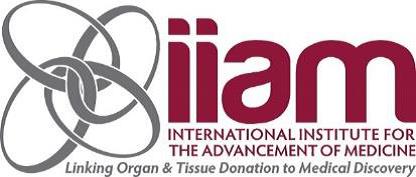Rethinking Donor Organ Suitability
With gratitude to our sponsor:

Title:
When:
Thursday, May 19, 2016
2:00 - 3:30 pm Eastern Time (please note - webinar is 90 mins)
Moderator/Speakers:
Erin Wells, RN, - Moderator
Lung Transplant Care Manager & Transplant Coordinator
Cincinnati Children’s Hospital
William D. Snyder, CTP - Speaker
Clinical Field Specialist, Normothermic Machine Preservation, OrganOx
Benjamin Shepherd, PhD - Speaker
Associate Director, R&D Therapeutics, Organovo
Doris A. Taylor, Ph.D., D.Sc. (hon), FACC, FAHA - Speaker
Director, THI Regenerative Medicine Research, Texas Heart Institute
Director, Center for Cell and Organ Biotechnology at the Texas Heart Institute and TAMU College of Veterinary Medicine
Adjunct Professor, TAMU College of Veterinary Medicine, Dept. Veterinary Physiology and Pharmacology,
Adjunct Professor, Rice University Department of Biosciences
Purpose/Goal:
Members of the donation and transplantation community serving diverse populations to include administrators, coordinators, physicians, nurses, surgeons, managers, quality improvement specialists, social workers, and other donation and transplantation center professionals and their colleagues.
At the end of the webinar, participants should be able to
- Explain the current challenges in organ utilization/preservation
- Describe how the OrganOX metra device works and how this and other devices may impact their practice.
- Describe the 3D Bioprinting technology and how it is distinguished from other forms of tissue engineering
- Identify how human tissue-derived living cells are being used today to build 3D Bioprinted tissues for use in translational medicine, including assessment of drug safety and efficacy to better predict patient outcomes in clinical trials
- Discuss the opportunity for 3D Bioprinted tissues to supplement whole organ transplantation in the replacement or repair of damaged and diseased tissues, to reduce the transplant organ shortage.
- Describe various strategies for engineering heart tissue.
- Identify unique rate limiting steps in cardiovascular tissue engineering.
- Describe the current solutions for creating a bioartificial heart.

